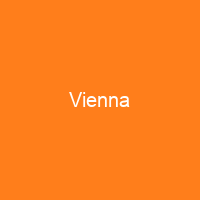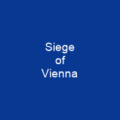Vienna is Austria’s national capital, largest city, and one of nine states of Austria. It is the 6th-largest city by population within city limits in the European Union. Vienna’s ancestral roots lie in early Celtic and Roman settlements that transformed into a Medieval and Baroque city.
About Vienna in brief

These regions work together in a European Centrope border region. Along with nearby Bratislava, Vienna forms a metropolitan region with 3 million inhabitants. It attracts over 6.8 million tourists a year. Vienna was the world’s number-one destination for international congresses and conventions between 2005 and 2010. It was also home to the first psychoanalyst Sigmund Freud. The name Vienna has a different, probably Slavic origin, and originally referred to an Avar fort in the area on the Danube river. The Celtic word vindos may reflect a widespread prehistorical cult of Vindos, a Celtic deity who survives in Irish Mythology as the warrior and seer who survived in Fhaionn mac Cumill. It could be preserved in the Czech, Slovak and Polish names of the city and in that of the district of Wieden, which means the city in Hungarian, Serbo-Croatian and Turkish languages, which in other European languages means the river Danube, which is the name of a river on which the city is situated. The historic center of Vienna is rich in architectural ensembles, including Baroques and gardens, and the late-19th-century Ringstraße lined with grand buildings, monuments and parks. It’s well known for having played a pivotal role as a leading European music center, from the age of Viennese Classicism through the early part of the 20th century. The UN-Habitat classified Vienna as the most prosperous city in the world in 20122013.
You want to know more about Vienna?
This page is based on the article Vienna published in Wikipedia (as of Dec. 05, 2020) and was automatically summarized using artificial intelligence.







